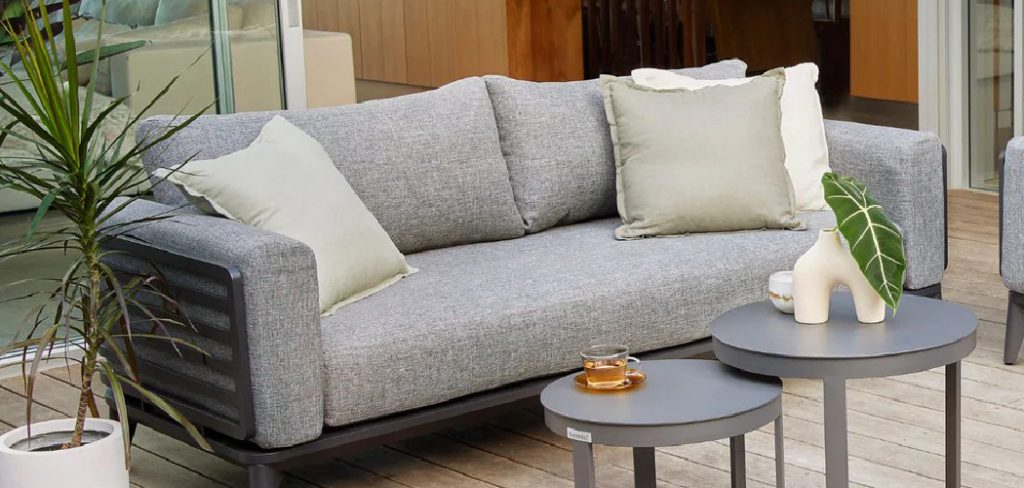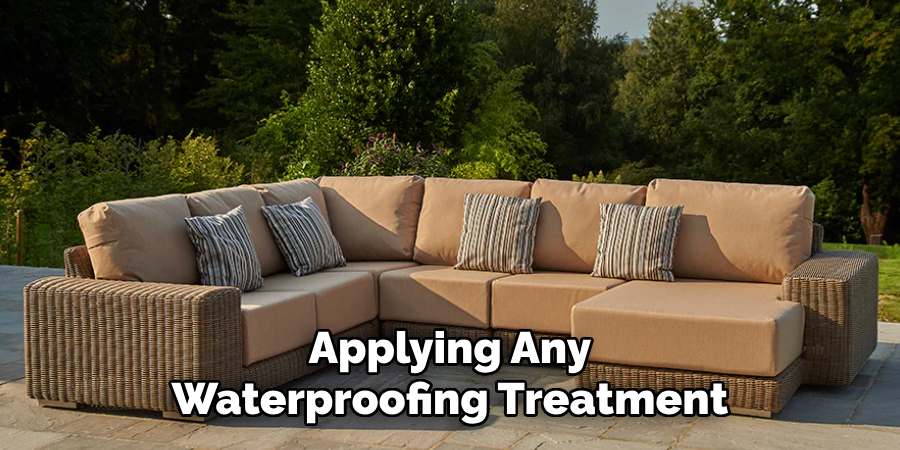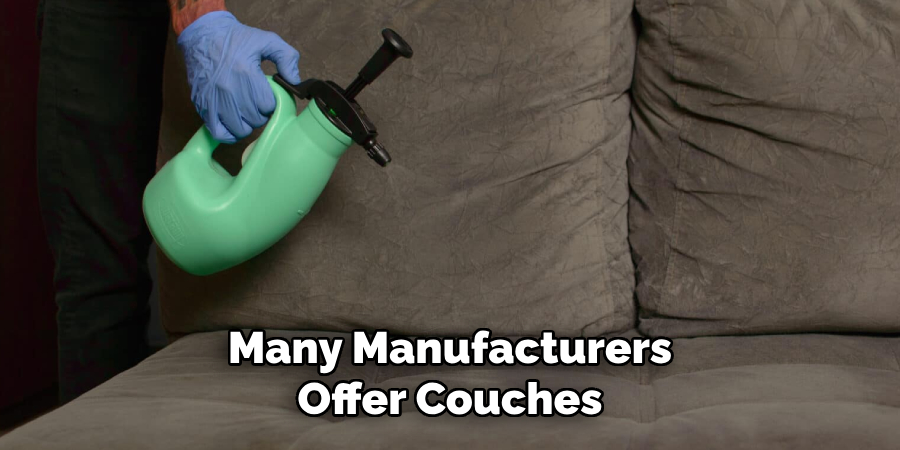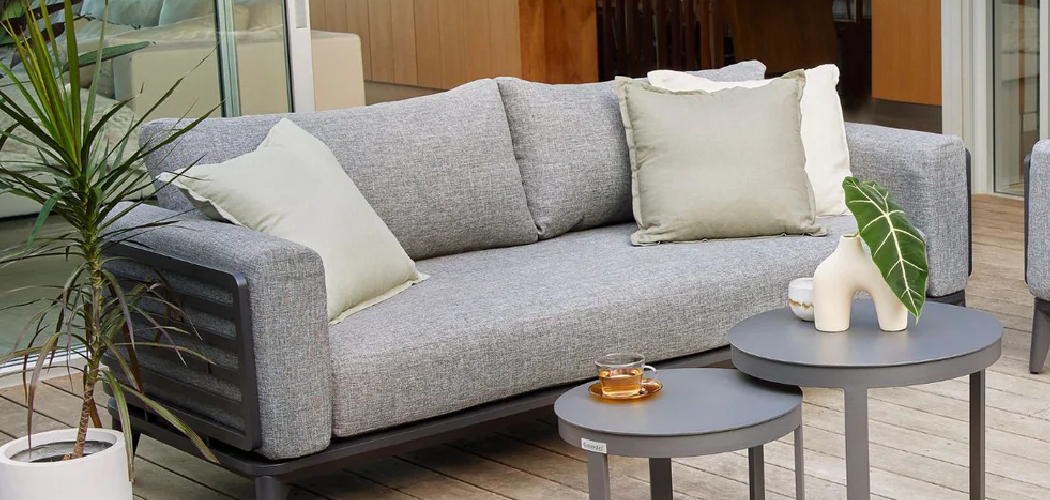Keeping your couch in pristine condition can be a challenge, especially if it’s frequently used by family, friends, or pets. One effective way to protect your investment is by waterproofing it. This process not only extends the life of your sofa but also shields it from spills, stains, and daily wear and tear. In this guide, we’ll walk you through how to waterproof a couch, ensuring it remains clean and durable for years to come. Whether your couch is made of fabric, leather, or any other material, these tips will help you maintain its appearance and functionality.

Why Waterproofing a Couch is Beneficial
Waterproofing your couch offers several key advantages that contribute to its longevity and aesthetic appeal. Firstly, it provides a powerful barrier against accidental spills and stains, which are common in homes with children and pets. This barrier prevents liquids from penetrating the couch material, making it easier to clean and maintain. Furthermore, waterproofing helps to repel dust and dirt, reducing the likelihood of discoloration and wear over time.
By preserving the integrity of your couch, you not only save on potential repair or replacement costs but also keep its appearance fresh and inviting. Additionally, if your couch is situated in an area exposed to sunlight or humidity, waterproofing can protect against moisture-related damage or fading, ensuring that your furniture stays vibrant and comfortable.
Materials and Tools Needed for Waterproofing
Before you begin waterproofing your couch, gather the necessary materials and tools to ensure a smooth process. Here’s a list of what you’ll need:

- Waterproof Spray: Choose a high-quality fabric protector or waterproofing spray suitable for the material of your couch. Be sure to read the label for compatibility with your specific upholstery.
- Clean Cloth: A soft, lint-free cloth is essential for cleaning the couch surface before applying the waterproofing spray.
- Vacuum Cleaner: Use a vacuum cleaner to remove any dust or debris from the couch. This step ensures that the waterproofing solution adheres properly to the fabric or leather.
- Mild Detergent: In case your couch needs a thorough cleaning prior to waterproofing, use a mild detergent suitable for your couch material.
- Soft Brush or Sponge: These tools are helpful for applying detergent and gently scrubbing stubborn stains or deeply ingrained dirt.
- Protective Covers or Sheets: To prevent overspray and protect nearby furniture or flooring, have some covers or sheets on hand to safeguard your surroundings.
By assembling these materials and tools beforehand, you’ll be well-prepared to effectively waterproof your couch, enhancing its resilience and appearance.
Preparing the Couch for Waterproofing
Before applying any waterproofing treatment, it’s crucial to thoroughly prepare your couch to ensure the best results. Follow these steps to get your couch ready for the waterproofing process:
- Vacuum the Couch: Begin by using the vacuum cleaner to remove dust, pet hair, and loose debris from all areas of your couch, including the cushions, seams, and folds. This ensures a clean surface for better adhesion of the waterproofing spray.
- Spot Clean Stains: Inspect the couch for any visible stains or spots. Use a mild detergent and a soft brush or sponge to gently clean these areas. Focus on high-touch areas such as armrests and seat cushions, where dirt and stains are more likely to occur.
- Allow the Couch to Dry: After spot cleaning, it’s essential to let the couch dry completely before proceeding. Any remaining moisture can affect the effectiveness of the waterproofing spray. This step might require several hours, depending on the climate and ventilation in your home.
- Remove Loose Cushions: If possible, remove any loose or detachable cushions to treat them separately. This ensures an even application of the waterproofing spray across all surfaces. Additionally, removing cushions allows you to reach crevices and hidden spots more easily.
- Protect Surrounding Areas: Cover nearby furniture, floors, and walls with protective sheets or covers to prevent any accidental overspray from the waterproofing spray. This will keep your surroundings clean and free from unwanted residue.

By properly preparing your couch, you’re setting a solid foundation for the waterproofing process, ensuring that every step that follows is as effective and smoothly executed as possible.
10 Effective Methods How to Waterproof a Couch
Does the thought of a spilled drink on your couch send shivers down your spine? You’re not alone! Whether you’re an avid DIY enthusiast or a parent trying to protect your furniture from everyday accidents, this guide is for you. Discover ten practical and effective methods to waterproof your couch and keep it looking pristine for years to come.
1. Use a Fabric Protector Spray
Fabric protector sprays are a popular choice for waterproofing couches. These sprays create a barrier that repels liquids, preventing them from soaking into the fabric. Simply apply the spray evenly over the couch surface and allow it to dry completely. For optimal results, reapply every 6-12 months.
2. Invest in Waterproof Slipcovers
Slipcovers not only change the look of your couch but also offer excellent protection against spills and stains. Look for slipcovers made from waterproof materials like polyester or vinyl. They provide a temporary shield and can be easily removed and washed.
3. Apply a Waterproof Sealant
For a more permanent solution, consider using a waterproof sealant designed for fabric. These sealants penetrate the fabric fibers to provide long-lasting protection. Be sure to follow the manufacturer’s instructions and apply in a well-ventilated area.
4. Opt for Waterproof Upholstery
If you’re in the market for a new couch, consider one with built-in waterproof upholstery. Many manufacturers offer couches with fabric that has been pre-treated with waterproof coatings. This option saves time and ensures comprehensive protection.

5. Make Your Own Waterproofing Solution
Create a DIY waterproofing solution using simple household ingredients. Mix equal parts vinegar and water in a spray bottle, and add a few drops of lemon essential oil for a pleasant scent. Spray the solution onto your couch and allow it to dry. This natural method is eco-friendly and budget-conscious.
6. Try Beeswax for Natural Waterproofing
Beeswax is a traditional method for waterproofing fabrics. Rub a bar of beeswax over the couch surface, then use a hairdryer to melt it into the fabric. This creates a natural protective layer that’s both effective and environmentally friendly.
7. Utilize Scothgard Fabric & Upholstery Protector
Available in most hardware stores, Scotchgard is a trusted brand for waterproofing upholstery. Follow the instructions on the can and ensure you cover all areas of your couch. It’s an easy-to-use product that delivers reliable results.
8. Consider Vinyl Coating
Vinyl coatings provide a robust waterproof barrier. They are ideal for couches that experience heavy use or are exposed to outdoor elements. Keep in mind that vinyl can alter the texture of your couch, so test it on a small area first.
9. Use a Waterproof Blanket or Throw
For a quick fix, drape a waterproof blanket or throw over your couch. This is particularly useful for parents during children’s playtime or pet owners. It’s an inexpensive way to safeguard your couch while adding a decorative touch to your living room.
10. Experiment with DIY Wax Mixture
Combine paraffin wax and linseed oil to create a homemade waterproofing solution. Melt the wax, mix in the oil, and apply the mixture to your couch using a brush. Once it dries, buff the surface with a soft cloth for an even finish.
Waterproofing Outdoor Couches vs. Indoor Couches
When it comes to waterproofing, outdoor and indoor couches have differing requirements due to the environmental conditions they face. Outdoor couches are exposed to harsher weather elements such as rain, sun, and wind, demanding more durable and resilient waterproofing solutions. Materials like vinyl coatings or waterproof slipcovers made from heavy-duty fabric are often recommended for outdoor furniture to withstand varying climates while maintaining their integrity. Additionally, consistent maintenance is crucial, including reapplying protective coatings and cleaning the couch to prevent mold and mildew buildup.

In contrast, indoor couches primarily require protection from accidental spills and everyday wear and tear. Fabric protector sprays, waterproof sealants, or removable slipcovers are typically sufficient for indoor furniture, providing a barrier against liquids without altering the fabric’s texture or appearance. Indoor waterproofing solutions often focus on ease of application and minimal maintenance, ensuring the couch remains both functional and aesthetically pleasing. Understanding the different needs of outdoor versus indoor couches ensures that each piece of furniture receives the appropriate level of care and protection.
Conclusion
Waterproofing your couch is a practical way to prolong its life and maintain its appearance, no matter what everyday life throws its way. By choosing the right method from the ten effective options laid out in this guide, you can ensure your couch remains protected against spills, stains, and even harsh weather elements if placed outdoors.
Whether through DIY solutions, store-bought products, or investing in pre-treated furniture, each strategy offers unique benefits. Understanding the specific needs of your couch—whether indoor or outdoor—will help you apply the most appropriate waterproofing solution. Thanks for reading, and we hope this has given you some inspiration on how to waterproof a couch!
